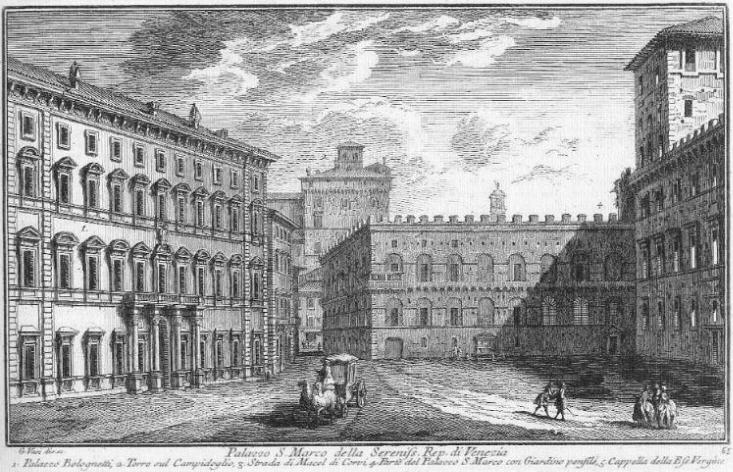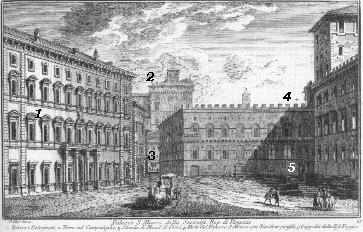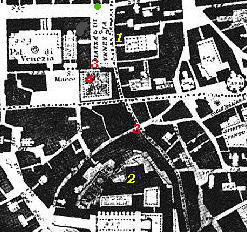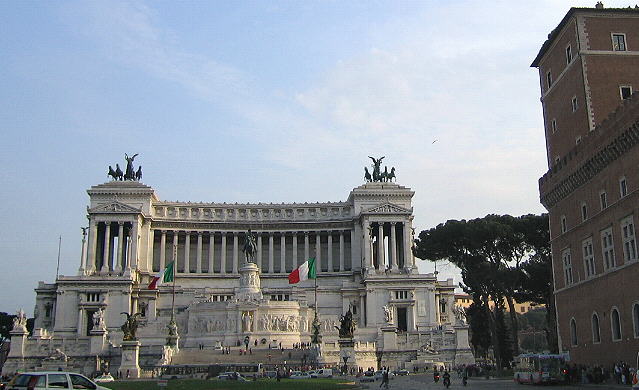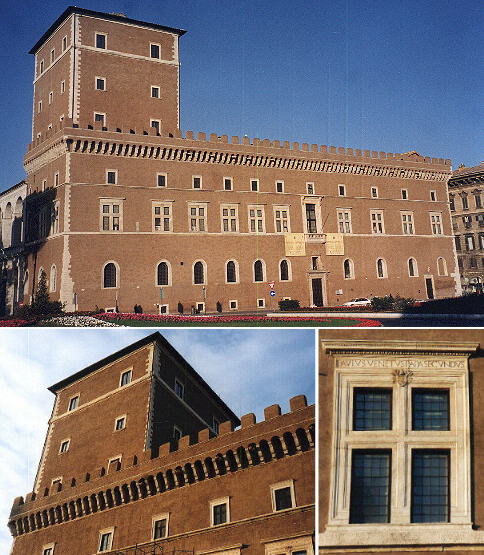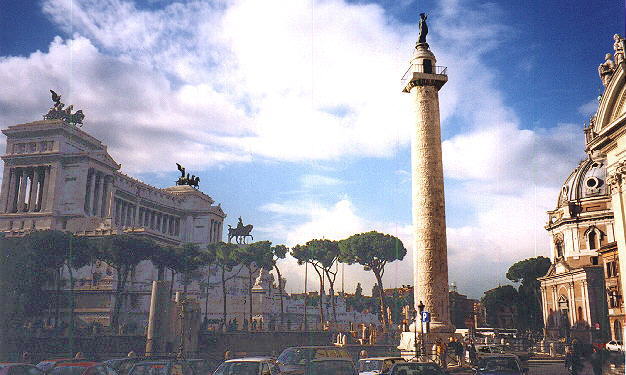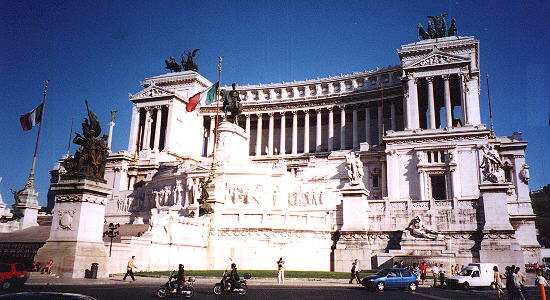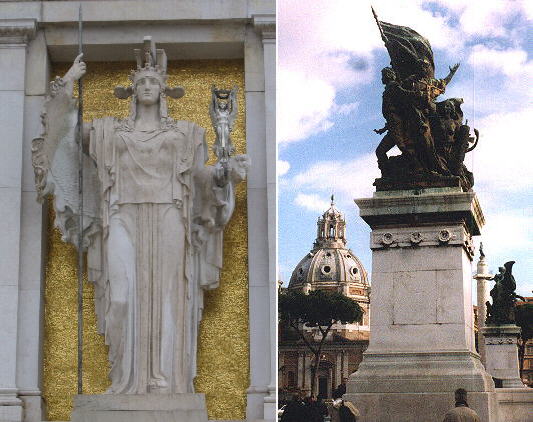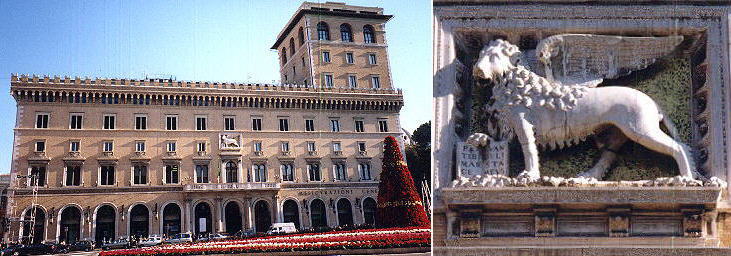  Palazzo S. Marco della Serenissima Repubblica di Venezia (Book 4) (Map B3) (Day 1) (View C7) (Rione Pigna) and (Rione Trevi) In this page:
Palazzo S. Marco was presented by Pius IV to the Republic of Venice
because the building had been erected in the XVth century by Paulus II of Venetian origin. It was
used as an embassy and it eventually became the embassy of the Austrian
Empire after 1797. The view is taken from the green dot in the small 1748 map here below.
In the description below the plate Vasi made reference to: 1) Palazzo Bolognetti;
2) Torre sul Campidoglio;
3) Strada di Macel de' Corvi;
4) Palazzetto Venezia;
5) Cappella della Beata Vergine. 3), and 4) are shown in other pages.
The dotted line in the small map delineates
the borders between Rione Pigna (top left quarter), Rione Trevi (top right quarter), Rione Campitelli (lower left quarter) and Rione Monti (lower right quarter).
The Kingdom of Italy needed to celebrate Victor Emmanuel II and the northern part of Capitol Hill was chosen to erect a gigantic monument which was to become the symbol itself of the new State. Palazzetto Venezia was re-erected near the church of S. Marco, the Torlonia sold their Palace (previously known as Palazzo Bolognetti) to allow space for enlarging Piazza Venezia and the medieval buildings on the slopes of the Capitol (including the imposing tower shown in the plate) were pulled down. The chapel mentioned by Vasi (Cappella della Beata Vergine) was in part rebuilt inside Palazzo Venezia.
The building has the structure of a medieval fortress but already the gentle touch of the Renaissance is clear in the distribution of the space and in the windows. Pope Paulus II started his Palace when he was a Cardinal and completed it as a Pope so both coats of arms can be seen on the building. The shape and the number of the windows were modified at various stages. The small door at the right end of the building leads to the reconstructed Cappella della Beata Vergine.
Terza Roma (the third Rome) was the name given to Rome in many poems celebrating "il Risorgimento" (a synonym of Rinascimento meaning the political renaissance and final unity of Italy). This picture symbolizes Roman, Papal and Italian Rome (in world history Second Rome and Third Rome are used with reference to Constantinople and Moscow: this site has also a few pages on the walls of Constantinople ).
I preferred to show the monument at a slight angle because a perfectly frontal view reminds me too much of the two familiar names it got: wedding-cake and typewriter. It was designed by Giuseppe Sacconi in 1885 and completed in 1911.
The emblem of Rome (left) is at the center of the Monument. Action
(right) is the name of one of the two bronze groups at the foot of the
steps. The monument is also the tomb of Italy's Unknown Soldier. Palazzo delle Assicurazioni Generali
The eastern side of Piazza Venezia is now closed by Palazzo delle Assicurazioni Generali, completed in 1907 and very similar in shape and size to Palazzo Venezia.
The fašade is embellished by a fine Renaissance winged lion from Padua (this site has also a
few pages on the
Venetian winged lions in Greece).
Next plate in Book 4: Palazzo Panfilio (North side)
Go
to |
All images © 1999 - 2003 by Roberto Piperno. Write to romapip@quipo.it
